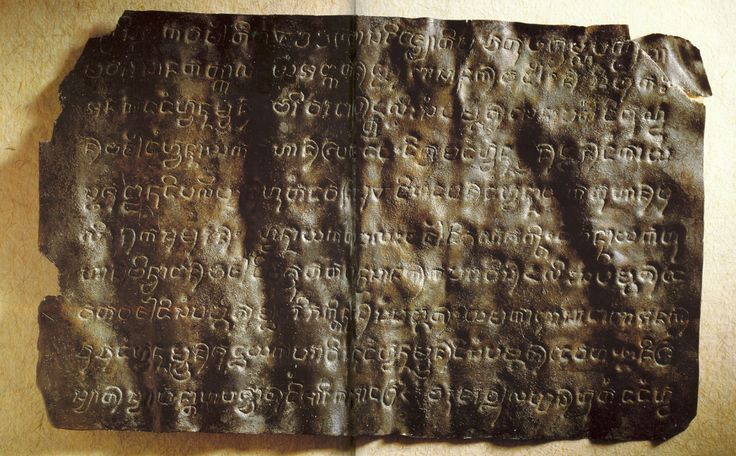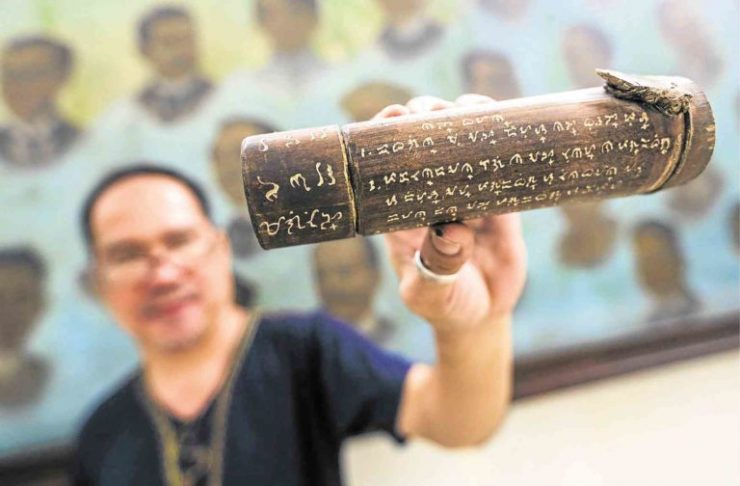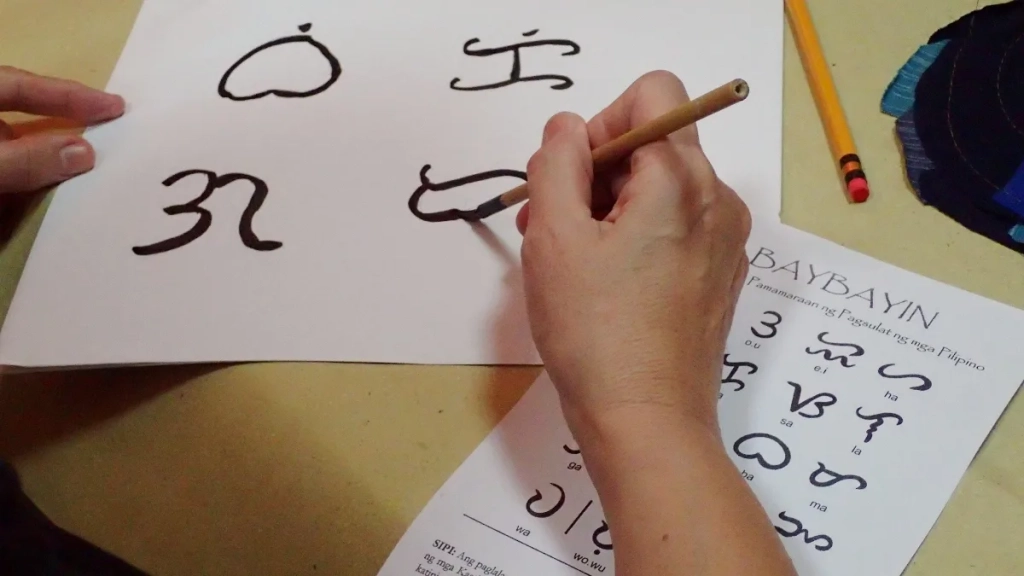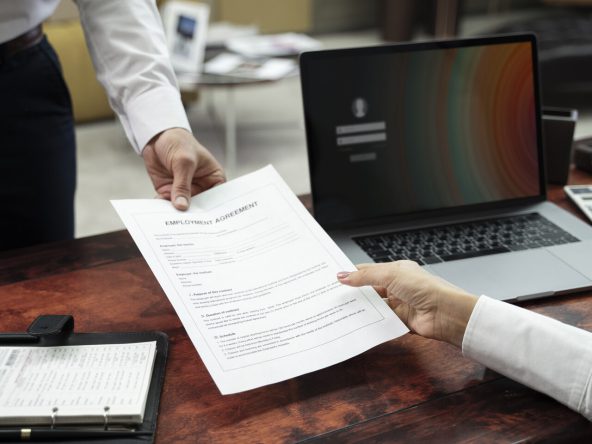Baybayin, an ancient script of the Philippines, is a significant part of the country’s cultural heritage. Once widely used before Spanish colonization, Baybayin has seen a resurgence in interest in recent years.
Integrating this national script into the education system holds numerous benefits, from cultural preservation to enhancing cognitive skills. This article explores the importance of reviving Baybayin in education and its potential impact on national identity and cultural pride.

Origins, Structure, and Early Usage
Baybayin, which in Tagalog means “to spell,” is an ancient writing system that predates Spanish colonization in the Philippines. Its origins are traced back to the Brahmic scripts of India, which spread throughout Southeast Asia due to extensive trade and cultural exchanges. Although the precise timeline of its development remains unclear, Baybayin is believed to have been in use by the 14th century, if not earlier.
Baybayin is a syllabary, a type of writing system where each character represents a syllable rather than an individual sound, as seen in alphabetic systems. The baybayin script comprises 17 basic characters, including 14 consonants and 3 vowels.
Each consonant character inherently includes the vowel sound ‘a,’ and diacritical marks placed above or below the characters known as kudlit are used to modify the vowel sound to either ‘i’ or ‘u.’ These allow for a relatively straightforward and efficient method of writing.
Vowels a, e/i, o/u
Consonants ba, ka, da, ga, ha, la, ma, na, nga, pa, sa, ta, wa, ya

The syllabary structure of Baybayin made it well-suited for the national spoken language in the Philippines, which are syllable-based. This characteristic facilitated ease of learning and use among early Filipinos, contributing to its widespread adoption for personal communication, poetry, and documenting oral traditions.
Baybayin played a significant role in the daily lives of early Filipinos and is primarily used for personal communication, allowing individuals to write messages, letters, and notes to one another. The script was also integral to the creation and preservation of poetry and oral traditions, serving as a means to document songs, poems, and stories that were passed down through generations.
Baybayin was inscribed on various natural materials that were readily available. Bamboo was a common medium, as it could be easily carved or etched with the script. Leaves and bark were also used, providing a portable and accessible way to write and share information. These materials, while impermanent, reflect the practical and resourceful nature of early Filipino writing practices.
Despite its widespread use for informal and personal purposes, Baybayin was not employed for administrative or formal documentation. Instead, the pre-colonial Filipinos relied heavily on oral communication and memory for official matters.
Important information, such as laws, trade agreements, and historical records, was memorized and recited by community leaders and elders. This oral tradition ensured the continuity and transmission of knowledge without the need for written records.
The reliance on oral communication for formal documentation can be attributed to several factors. Firstly, the impermanent nature of the materials used for writing meant that written records were not durable or long-lasting. Secondly, the oral tradition was deeply ingrained in the culture, with a strong emphasis on verbal expression and communal memory. This tradition fostered a sense of community and collective responsibility for preserving and transmitting knowledge.
The origins and structure of Baybayin highlight its historical and cultural significance in pre-colonial Philippines. The script not only served as a functional writing system but also embodied the rich linguistic heritage of the region.
Its revival and continued study provide a valuable connection to the past and a means of preserving the cultural identity of the Filipino people.
Impact and Decline through Spanish Occupation

The arrival of Spanish colonizers in the 16th century brought profound changes to the Philippines, leading to the subdual of native scripts like Baybayin.
In their efforts to the spread Christianity across the archipelago and to establish administrative authority, the Spaniards introduced the Latin alphabet. Consequently, the prevalence of Baybayin declined significantly, although it continued to be used in some regions and for personal communication.
By the 18th century, Baybayin had largely been supplanted by the Latin script in most parts of the Philippines. Its use became confined to remote areas and among indigenous communities, where traditional practices persisted.
The absence of formal education and documentation in Baybayin further hastened its decline, gradually relegating this ancient script to obscurity in favor of the dominant Latin alphabet imposed during colonial rule.
Rediscovery and Revival
In the late 20th and early 21st centuries, Baybayin experienced a resurgence of interest driven by a broader movement to reclaim and celebrate Filipino cultural heritage. This revival was spearheaded by scholars, artists, and cultural advocates who recognized the importance of preserving and promoting this ancient script.
Their efforts have been multi-faceted, encompassing academic research, cultural projects, and digital integration.
Academic research
Researchers and historians have played a crucial role in the rediscovery and revival of Baybayin. They have published numerous studies and books that delve into the history, structure, and significance of the ancient script.
Through meticulous research, these scholars have unearthed valuable information about Baybayin, providing a deeper understanding of its origins and evolution. Their work has not only enriched the academic field but also made Baybayin more accessible to the general public.
Cultural projects
Cultural organizations and individuals have launched various projects aimed at teaching and promoting Baybayin. These initiatives include workshops, online courses, and community programs designed to educate people about the script and its historical significance.
By engaging the community through interactive and educational activities, these cultural projects have helped foster a renewed interest in Baybayin. They have provided platforms for individuals to learn and appreciate the script, ensuring its continued relevance in contemporary Filipino culture.
Digital integration
The integration of Baybayin into the digital world has been a significant factor in its revival. The creation of Baybayin fonts and keyboard layouts has made it easier to use the script in digital communication. This technological advancement has further popularized Baybayin among the younger generation, who are more inclined to engage with digital media.
By adapting Baybayin for use in social media, mobile apps, and other digital platforms, advocates have ensured that the script remains a living and evolving part of Filipino culture.
The rediscovery and revival of Baybayin are testaments to the enduring importance of cultural heritage. Through academic research, cultural projects, and digital integration, Baybayin has been brought back into the spotlight, allowing Filipinos to reconnect with their past and preserve their rich cultural legacy.
This renewed interest in Baybayin not only honors the historical significance of the script but also ensures its continued relevance and adaptation in the modern world. By embracing Baybayin, Filipinos can celebrate their unique cultural identity and inspire future generations to cherish and continue this valuable tradition.
Baybayin in Preserving Filipino Culture and Identity

Baybayin offers a direct link to the pre-colonial past, reflecting linguistic and cultural practices before Spanish colonization. This ancient script provides valuable insights into early Filipino civilization, including their literacy, communication methods, and artistic expressions.
Reviving Baybayin helps maintain cultural continuity, bridging the gap between past and present. By learning and using Baybayin, Filipinos can reconnect with their ancestors, understanding their ways of life and preserving traditional knowledge and practices that might otherwise be forgotten.

Baybayin is a unique aspect of Filipino culture that differentiates it from other nations. Promoting its use can instill a sense of pride and identity among Filipinos, emphasizing their distinct cultural heritage amidst a globalized world. Understanding and valuing Baybayin can reinforce cultural roots, especially among younger generations.
It provides a tangible connection to their heritage, fostering a sense of belonging and pride in their cultural identity. Additionally, Baybayin can serve as a unifying symbol for the diverse ethnic groups in the Philippines. While the country is home to numerous languages and dialects, Baybayin represents a shared cultural artifact that can promote unity and mutual respect among different communities.
Learning Baybayin involves understanding different shapes and strokes, which can enhance cognitive abilities such as memory, attention to detail, and problem-solving skills. It also promotes creativity and artistic expression, enriching the overall educational experience.
Introducing Baybayin in schools can encourage multilingualism, as students learn to appreciate and navigate between different scripts and languages. This linguistic awareness can foster a greater appreciation for the diverse linguistic heritage in the country.
Baybayin is still used by some indigenous communities in the Philippines. By reviving and promoting the script, mainstream society can develop greater awareness and respect for these communities, recognizing their contributions to the cultural tapestry of the nation. Many traditional songs, stories, and rituals were originally recorded in Baybayin. Reviving the script can help preserve and disseminate this traditional knowledge, ensuring it is passed down to future generations.
The revival of Baybayin can boost cultural tourism. Tourists interested in history, art, and culture may be drawn to the Philippines to learn about and experience Baybayin, contributing to the local economy. Additionally, Baybayin can inspire various cultural products, such as books, artworks, fashion, and digital content. These industries can thrive by tapping into the growing interest in Filipino heritage, promoting local craftsmanship and creativity.
The integration of Baybayin into digital platforms, such as social media, mobile apps, and educational software, makes it relevant and accessible to younger generations. This modern adaptation ensures that Baybayin remains a living, evolving part of Filipino culture.
The revival of Baybayin can facilitate cultural exchange on a global scale. As more people become aware of and interested in Baybayin, it can foster cross-cultural understanding and appreciation, showcasing the rich heritage of the Philippines to the world.
Baybayin is not just an ancient script—it is a powerful symbol of Filipino culture and identity. Reviving Baybayin in education and daily life can strengthen national pride, preserve cultural heritage, and foster a sense of unity among Filipinos. By embracing Baybayin, the Philippines can celebrate its past, enrich its present, and inspire future generations to cherish and continue their cultural legacy.





